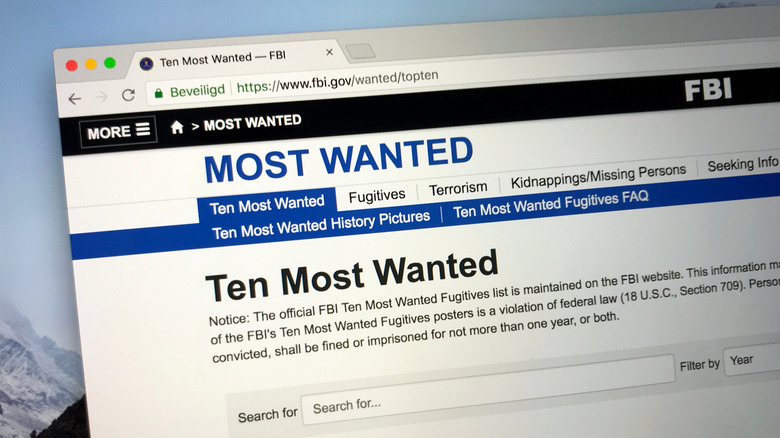How The FBI Selects Its Ten Most Wanted List
Authorities have always sought help from citizens in catching criminals. It's not clear when the FBI started distributing wanted posters, but they began using IOs (Identification Orders) back in 1919 as a means to catch fugitives. FBI's historian John Fox shared with SFGate that IOs were fliers that consisted of information such as photos, details of the crime, criminal history, and fingerprints of the perpetrator if they were available.
The FBI's official most wanted list came about after a news story was published in 1949 that focused on the "toughest guys" the bureau wanted to apprehend, as reported by History. The article was so popular among the public, and it prompted FBI director J. Edgar Hoover to establish the program the following year. The FBI's very first Ten Most Wanted Fugitives list was issued on March 14, 1950, as reported by Time. Throughout the years, plenty of criminals from the list has been located and captured, thanks in part to tips given by the public. With so many criminals on the loose, however, how does the FBI choose which ones are to be included on the Ten Most Wanted List?
FBI field offices submit candidates
Choosing which criminals to include on the FBI's Ten Most Wanted List is a long process, but there are two main criteria they follow, as Kevin Perkins of the FBI shared with NPR. "The first one is that they are a present threat to society, whether it's a crime of violence or, in some cases, terrorism with Bin Laden and the like ... And the second one is that we're looking for people that we think, with the public's help, we're going to be able to capture in a rather quick period of time."
The 56 field offices of the FBI submit their candidates to be included on the Ten Most Wanted List based on the criteria. It's also important to note that cases included on the list are the ones wherein authorities have exhausted all their leads and need help from the public. Per the BBC, the candidates are analyzed and forwarded up the chain of command until it reaches the FBI's director for approval. Fugitives are removed from the list when they die, are killed, or when they are captured, and a new fugitive is then approved to take the available spot on the list. According to the FBI, more than 500 fugitives have been on the list since 1950 and of those, 490 have been found or apprehended.

